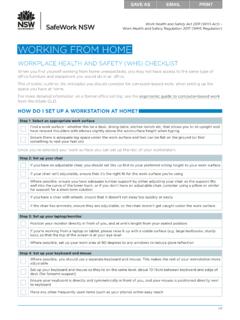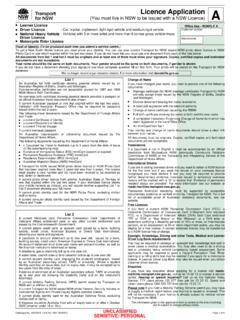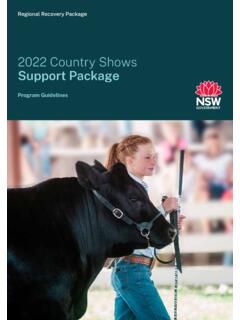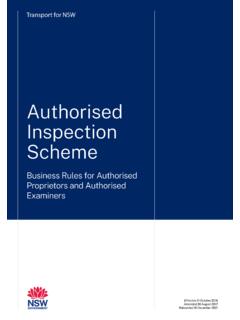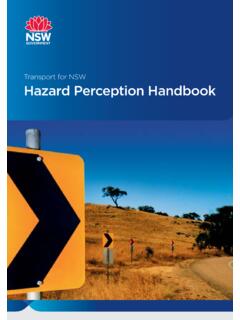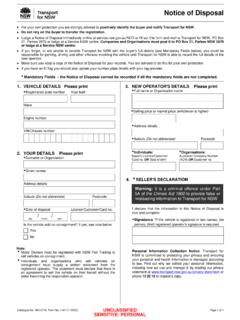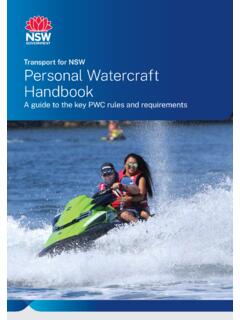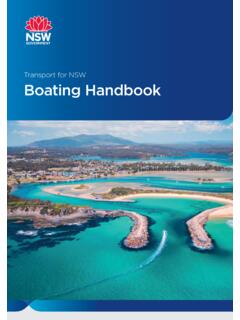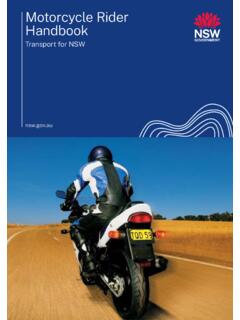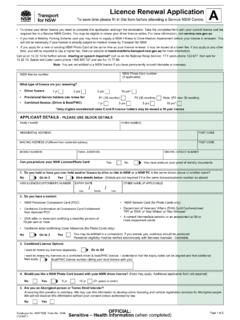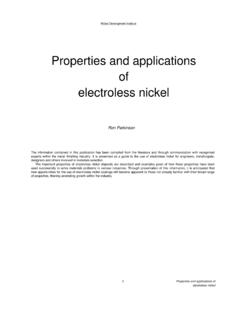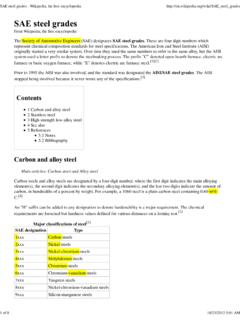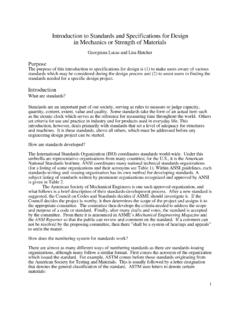Transcription of Light vehicle modifications manual - suspension and ride ...
1 suspension and ride height Gazettal November 2016 1 (35 pages) Light vehicle modifications manual : suspension and ride height AUTHOR: Dan Leavy DATE: November 2016 VERSION: REFERENCE: TP16/03352 DIVISION: Freight, Strategy & Planning Developed in association with the NSW vehicle Standards Working Group suspension and ride height Gazettal November 2016 2 (35 pages) Light vehicle modification manual suspension and ride height Preface This Light vehicle modification manual suspension and ride height (the manual ) is intended to provide guidance on modifications to a vehicle s suspension and other components that may alter its original ride height.
2 It outlines modifications that require certification in accordance with the Road Transport ( vehicle Registration) Regulation 2007 and the vehicle Safety Compliance Certification Scheme, and how to obtain the certification. This manual was developed by an ad hoc focus group convened under the NSW vehicle Standards Working Group, which was established in 2012 by the NSW Minister for Roads and Ports to ensure industry and user stakeholders are represented in developing vehicle standards and policies in NSW.
3 The vehicle Standards Working Group is co-chaired by Transport for NSW and the Australian Confederation of Motor Clubs, and the members are: Australian Aftermarket automotive Association Australian Confederation of Motor Clubs Confederation of Australian Motor Sport Inc Institute of automotive Mechanical Engineers Motorcycle Council of NSW Motorcycle Council of NSW Motor Traders Association NRMA Motoring Services NSW Motorcycle Alliance NSW Police Force Roads and Maritime Services Transport for NSW vehicle Safety Certification Scheme Licensed Certifier This manual was first published in December 2016.
4 It is a live document and subject to change in response to practical feedback. suspension and ride height Gazettal November 2016 3 (35 pages) General Scope This Light vehicle modification manual suspension and ride height (the manual ) applies to all types of Light vehicles, except motorcycles and motor tricycles. It is intended to assist persons in modifying a vehicle s suspension and other components that may alter its original ride height. It provides guidance on how to raise and lower a vehicle s ride height, and outlines modifications that require certification in accordance with the Road Transport ( vehicle Registration) Regulation 2007 (the Regulation) and the vehicle Safety Compliance Certification Scheme (VSCCS), and how to obtain the certification.
5 The manual has been gazetted as an Authority standard compliance specification in accordance with the provisions of the Regulation, which means it can be used as means to demonstrate compliance with the Regulation and associated standards. This manual only covers changes in ride height of up to 150mm (see Section ). Notes: 1. The term vehicle used in this manual refers to Light vehicles, being vehicles with a gross vehicle mass of tonnes or less. 2. Terms that are italicised are defined in Appendix A.
6 Introduction The Regulation requires that all registrable vehicles comply with the applicable vehicle standards, and modified vehicles continue to comply with those standards; and that the vehicle and its parts and equipment are suitable for safe use, and are in a thoroughly serviceable condition. To assist vehicle owners in meeting these obligations, the Roads and Maritime Services (RMS) has created the VSCCS under the Regulation. This is a modification scheme that authorises persons with appropriate technical qualifications, training and experience, known as licensed certifiers , to inspect a modified vehicle and issue a compliance certificate if they are satisfied that it complies with the applicable vehicle standards.
7 Except for purposes relating to compliance certification, a vehicle that has undergone a significant modification ( one that requires a compliance certificate), must not be used on a road or road related area unless a compliance certificate has been issued for the vehicle . (For more information, refer to clauses 52, 55A, 76AC, 76AD and 76AF of the Regulation.) There are a number of reasons that an owner or operator may choose to raise or lower a vehicle . Typically, these are: to gain additional under-chassis clearances for operational or recreational purposes; to increase its load carrying capability; for a special need, (such as improving access for a disabled passenger); or simply to alter its appearance for aesthetic purposes.
8 A vehicle s suspension is critical to its safe operation, and is designed by the manufacturer to provide safe and predictable performance under specified driving operations. Modifying the suspension beyond the manufacturer s specification, or raising or lowering its ride height, has the potential to reduce the level of safety a vehicle provides its occupants or other road users; the more extensive these modifications , the greater this potential reduction in safety. As a result, many modifications that result in a change in ride height are deemed to be significant and require certification by a licensed certifier.
9 Expert advice from a licensed certifier or other competent person should be obtained early in the modification process to help minimise and control the risks associated with the modifications . suspension and ride height Gazettal November 2016 4 (35 pages) The level of assessment a vehicle must undergo to obtain a compliance certificate is based on the extent of the modification and the risk they pose to the vehicle s occupants and other road users. There are a number of options for obtaining a compliance certificate for the modified vehicle , and these are: 1.
10 A detailed examination of the vehicle combined with the tests specified in the applicable vehicle standard and a road test. 2. Inspection of approved aftermarket components. 3. Assessment based on tests previously done on a similarly modified vehicle . Regulatory status of the suspension manual To assist in meeting the requirement that a modified vehicle must comply with the applicable vehicle standards, Clauses 55A and 76AD of the Regulation state that a modified Light vehicle is taken to comply with the applicable vehicle standards if the vehicle complies with an Authority standard compliance specification, or with the relevant provisions of vehicle Standards Bulletin 14.
